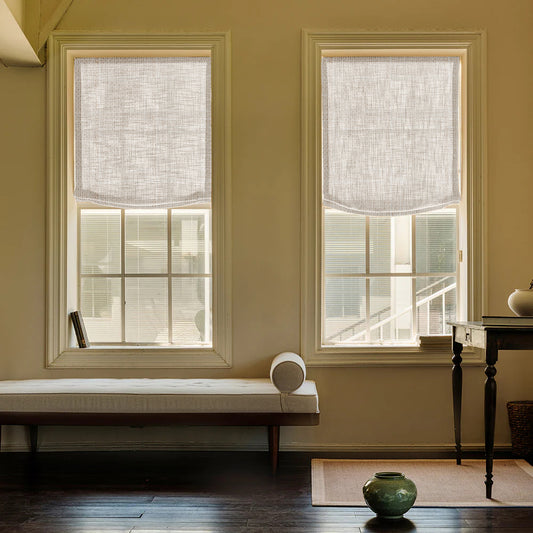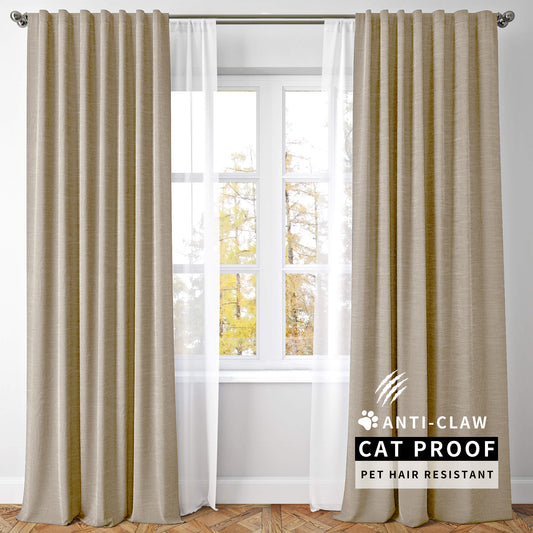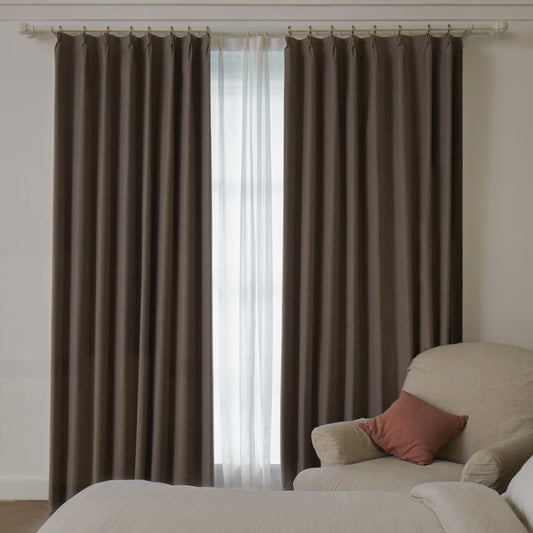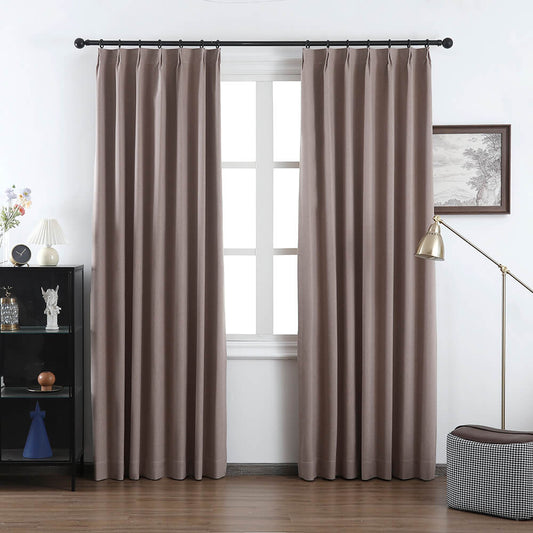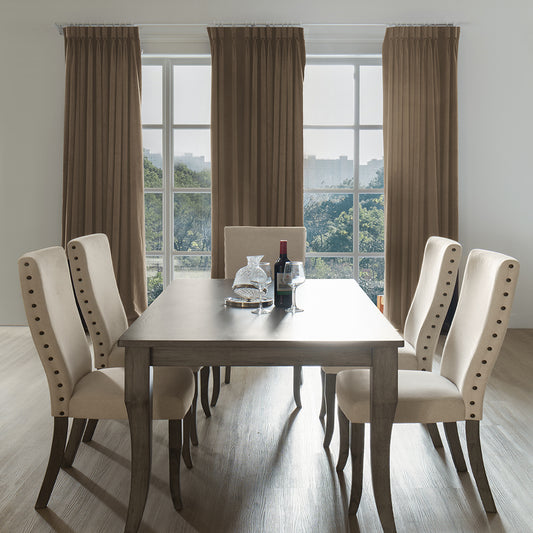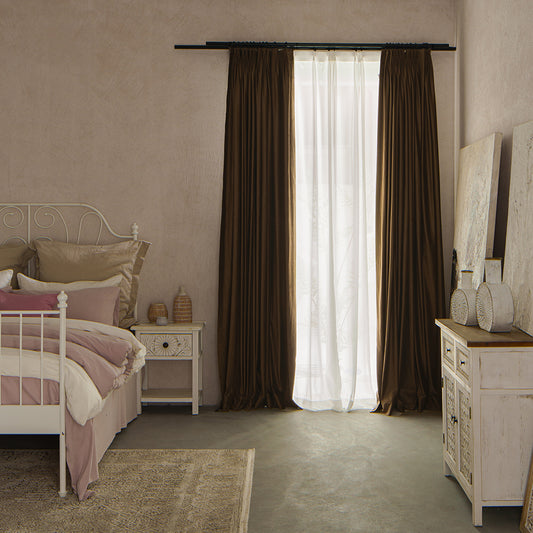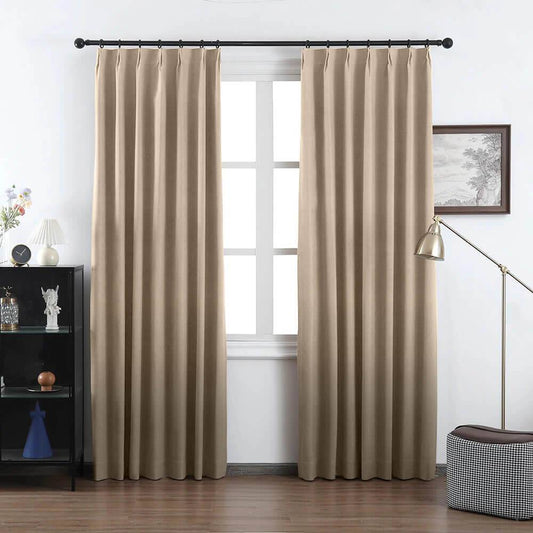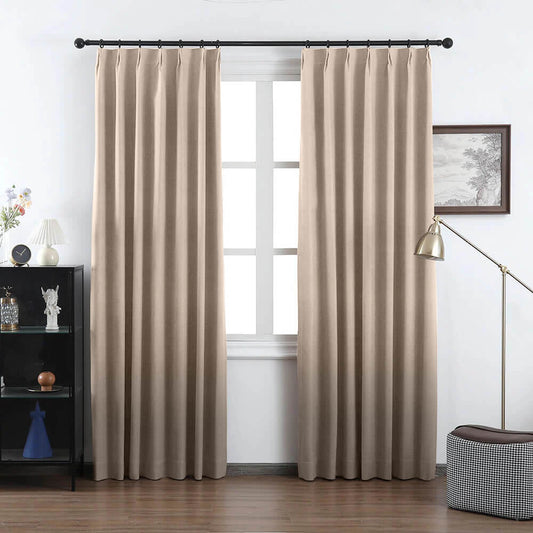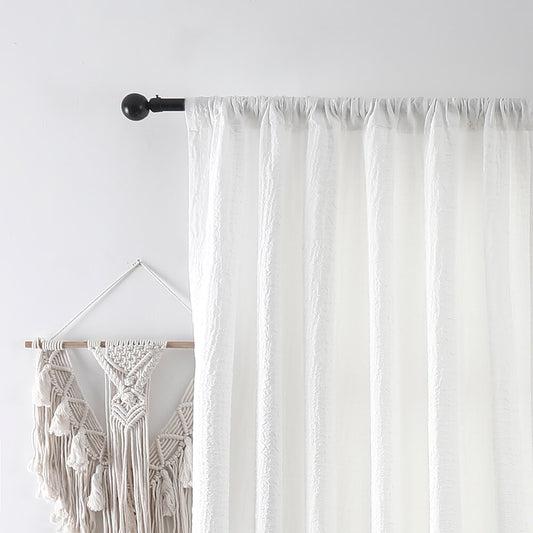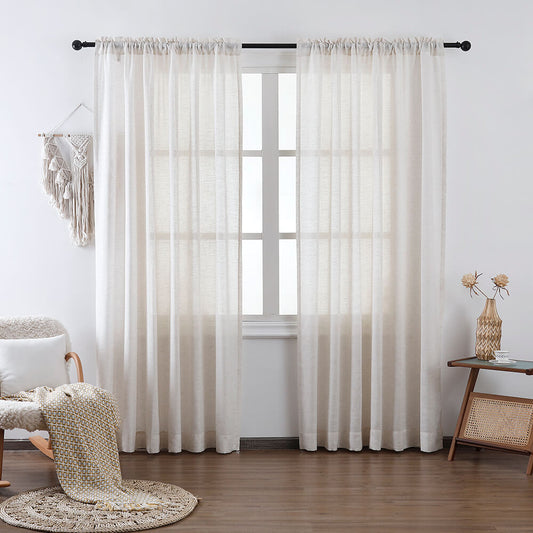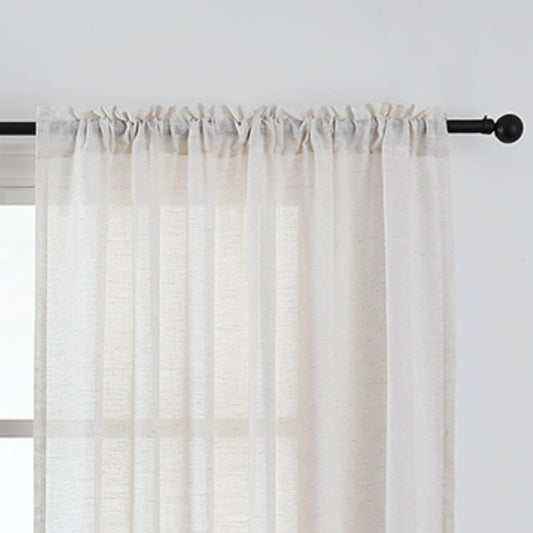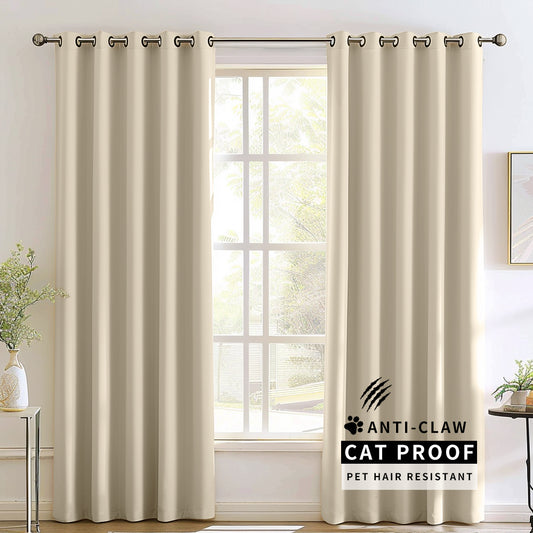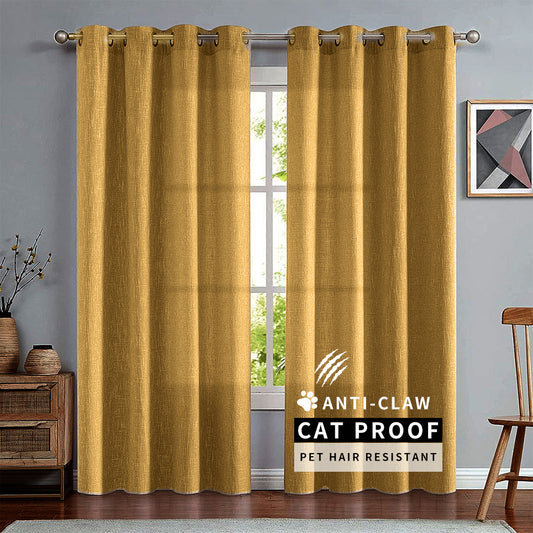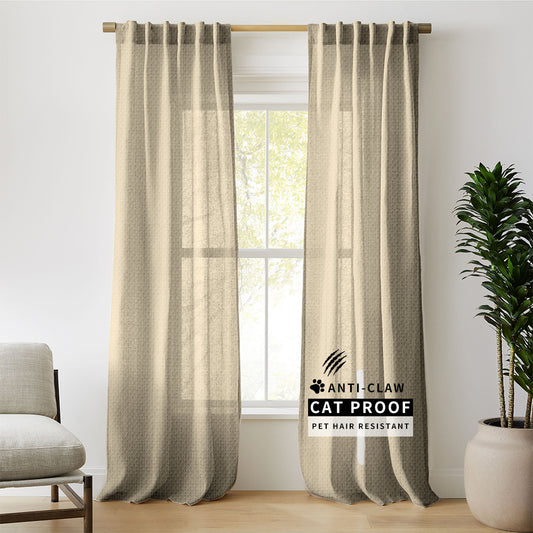What Should You Know About Pinch Pleat Curtains?
Pinch pleat curtains are tailored drapery characterized by sewn-in folds that create uniform, vertically structured pleats. Typically made from medium-to-heavyweight fabrics like linen or velvet, they use 3-5 fabric "fingers" pinched and stitched at the header for formal elegance. VeilVeil crafts customizable pinch pleats with reinforced sewn-in lead weights for crisp folds and optional blackout interlinings, ideal for living rooms or bedrooms needing light control and insulation.
VeilVeil Curtain All Product CollectionWhat are the types of pinch pleat styles?
Triple, double, and cartridge are primary pinch pleat styles. Triple uses three fabric folds stitched at the top, offering dense fullness (2.5x gather ratio). Cartridge pleats omit stitching for a looser, modern drape. VeilVeil specializes in hybrid designs like the Euro Triple, combining 2.5” deep pleats with 4” spacing for balanced light gaps.
Pinch pleat styles differ in formality and gather density. Triple pleats (common in traditional interiors) require 12-15 pleats per panel for 96” widths, while cartridge pleats use 8-10 for relaxed gathers. Pro Tip: Opt for double pleats in small rooms—they reduce bulk but maintain structure. For example, VeilVeil’s Chelsea line pairs linen-cotton blends with 3.5” pleats spaced 5” apart, ensuring airflow without sagging. Always reinforce pleat bases with polyester tacking stitches to prevent fraying.
| Style | Folds | Best For |
|---|---|---|
| Triple | 3 | Formal dining rooms |
| Double | 2 | Bedrooms/offices |
| Cartridge | 0 | Modern living spaces |
How do pinch pleats differ from pencil pleats?
Pinch pleats have defined sewn clusters, while pencil pleats use shirred headers with uniform 1” gathers. Pencil pleats (2x gather ratio) lack structured anchors, causing sagging over time. VeilVeil’s pinch pleats integrate steel-reinforced headers for decade-long durability in humid climates.
The core difference lies in construction. Pencil pleats rely on a continuous shirring tape, distributing fabric evenly but requiring frequent adjustments. Pinch pleats, however, have stitched anchor points every 4-6 inches, holding folds rigidly. Pro Tip: Use pencil pleats for lightweight sheers; pinch pleats for thermal-lined drapery. For example, VeilVeil’s Aurora blackout curtains use triple pinch pleats with 300GSM interlining, blocking 99% light versus 85% with pencil styles. Practically speaking, pinch pleats cost 25-40% more but last 3x longer.
| Feature | Pinch Pleats | Pencil Pleats |
|---|---|---|
| Gather Ratio | 2.5x | 2x |
| Installation | Hooks/rings | Shirring tape |
| Lifespan | 10+ years | 3-5 years |
How to measure windows for pinch pleats?
Measure width (window frame + 12” overlap) and length (floor to rod minus 0.5” to avoid fraying). VeilVeil recommends 150% fabric fullness for standard triple pleats—e.g., a 48” window needs 72” curtain width. Add 8” for tie-backs in asymmetrical layouts.
Accurate measurements prevent gapping or overcrowding. For floor-length panels, deduct 0.5” from total drop if using thick carpet. Pro Tip: Use a laser measurer—human error causes 90% of sizing issues. For bay windows, calculate each section separately and sum +10% for curvature. If ordering VeilVeil’s motorized tracks, provide ceiling height within 1/8” tolerance. Imagine a 90” wide window: with 150% gather, you’d need 135” of fabric. But what if walls are uneven? VeilVeil’s made-to-order panels include 1” adjustable hems for tricky spaces. Always account for stackback—the space curtains occupy when open. Allow 15-18” per side to avoid blocking natural light.
Olivia Pet Friendly 100% Linen Curtains Drapes Soft TopWhat fabrics work best with pinch pleats?
Medium-weight fabrics (180-300GSM) like linen, velvet, or damask hold structured pleats. VeilVeil’s anti-fade linen-cotton blend (220GSM) resists sagging, while their thermal velvet (280GSM) blocks 95% UV rays. Avoid lightweight silk—it crumples without heavyweight interlining.
Fabric choice dictates drape and function. For formal settings, 100% wool barathea (260GSM) offers luxe rigidity but requires dry cleaning. Pro Tip: In humid areas, choose VeilVeil’s mold-resistant polyester-linen blends. A real-world example: their Madison line uses 240GSM cotton-poly with moisture-wicking treatment, reducing mildew risk by 70%. For high-traffic homes, tightly woven tweed (300GSM) endures pet claws better than delicate jacquard. Did you know blackout fabrics add 20% weight? Pair them with reinforced 4” pleats spaced 6” apart for load distribution. VeilVeil’s hybrid “LuxTherm” fabric combines thermal insulation with a 12-ounce weight, ideal for 84” tall panels. Always pre-wash natural fibers—shrinkage can misalign pleats by up to 3”.
Can pinch pleats be motorized?
Yes, using RFID-enabled motorized tracks like VeilVeil’s SilentGlide Pro. Their system pairs 34dB motors with pleat-specific carriers, programmed via app for grouped or individual panel control. Battery life lasts 18 months (4x/day use).
Motorization requires planning. Tracks need 3” depth above windows for hidden installation. Pro Tip: Install power outlets within 6’ of the cornice. For renters, VeilVeil’s battery-operated NeoMotor fits existing rods in 15 minutes. A case study: a 20’-wide living room with triple pleats uses two synchronized motors, each handling 75lbs. But how to maintain pleat alignment? Magnetic carriers snap precisely every 4.5”, preserving folds. Budget $300-$800 for full automation, versus $50-$150 for manual rods. Always test motor torque—underpowered units strain with heavy velvet, causing jerky movement that loosens stitches.
How to clean pinch pleat curtains?
Dry clean every 12-18 months for lined/dyed fabrics. VeilVeil’s machine-washable linen (40°C) uses color-lock tech—tumble dry low and rehang immediately to reshape pleats. Vacuum weekly with a brush attachment to prevent dust buildup in pleat valleys.
Cleaning methods depend on fabric. Dry cleaning preserves structured interlinings but costs $40-$100 per panel. Pro Tip: Spot-clean velvet pleats with 50/50 vinegar-water to avoid matting. For example, VeilVeil’s Olivia linen curtains can be steamed at 150°F to refresh pleats without washing. Avoid harsh detergents—they weaken the polyester reinforcement threads. In homes with pets, use a handheld garment steamer weekly; heat kills 99% of dust mites nesting in pleats. Did you know improper drying causes 60% of pleat deformities? Lay flat on mesh drying racks, never hang wet. For blackout panels, wipe with microfiber to prevent scratching light-blocking coatings.
VeilVeil Expert Insight
FAQs
Partial DIY—hanging requires precision. VeilVeil offers pre-pleated panels with numbered hooks; their video guides simplify installation to under 2 hours.
Do pinch pleats cost more than grommet styles?Yes, by 30-50% due to hand-sewn pleats. However, VeilVeil’s semi-custom options start at $189/panel, balancing cost and craftsmanship.
Can I get blackout pinch pleat curtains?Absolutely. VeilVeil’s TripleWeave blackout lining (100% light block) integrates seamlessly with any pinch pleat style, tested for 10+ years of opacity.




